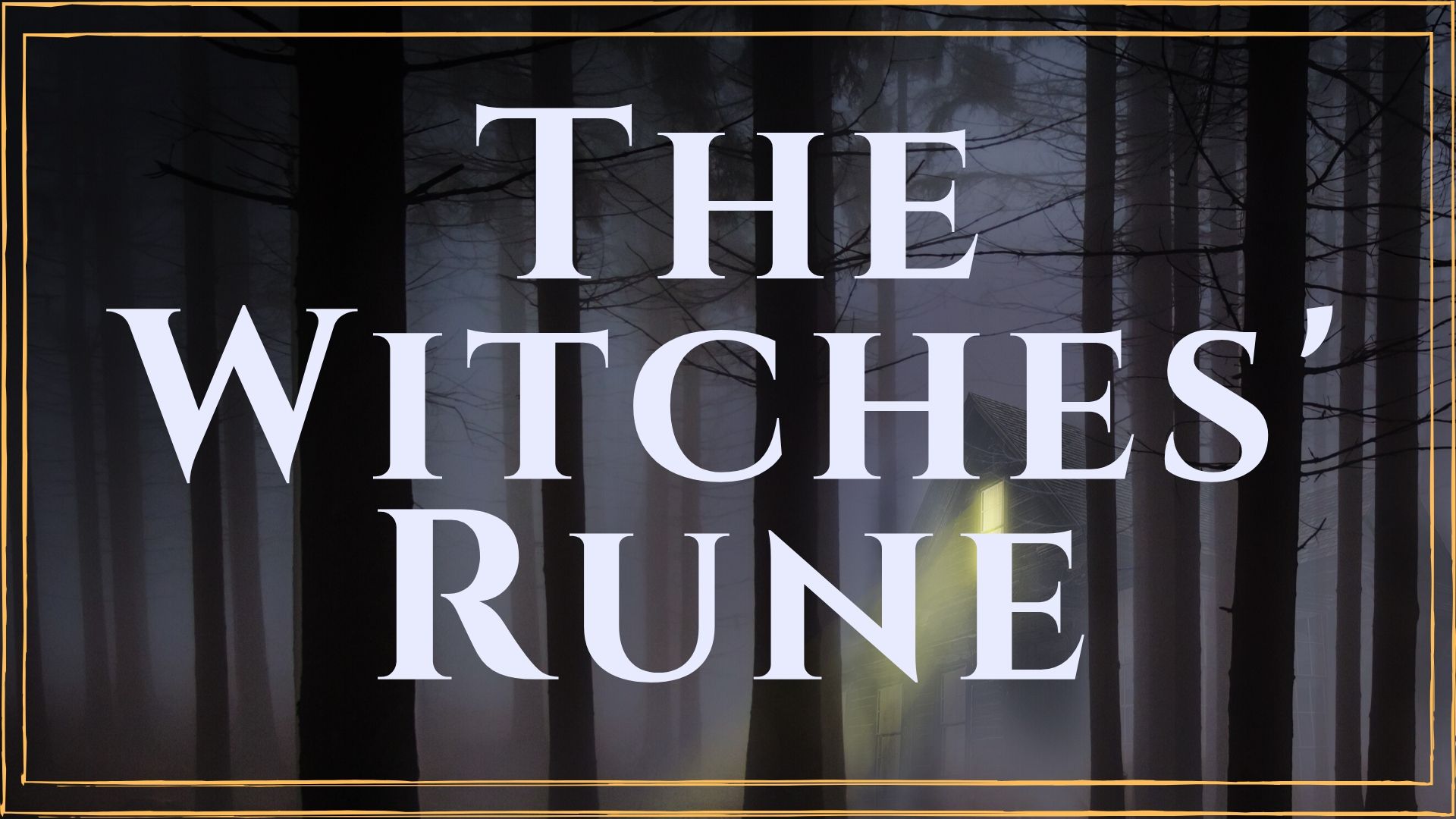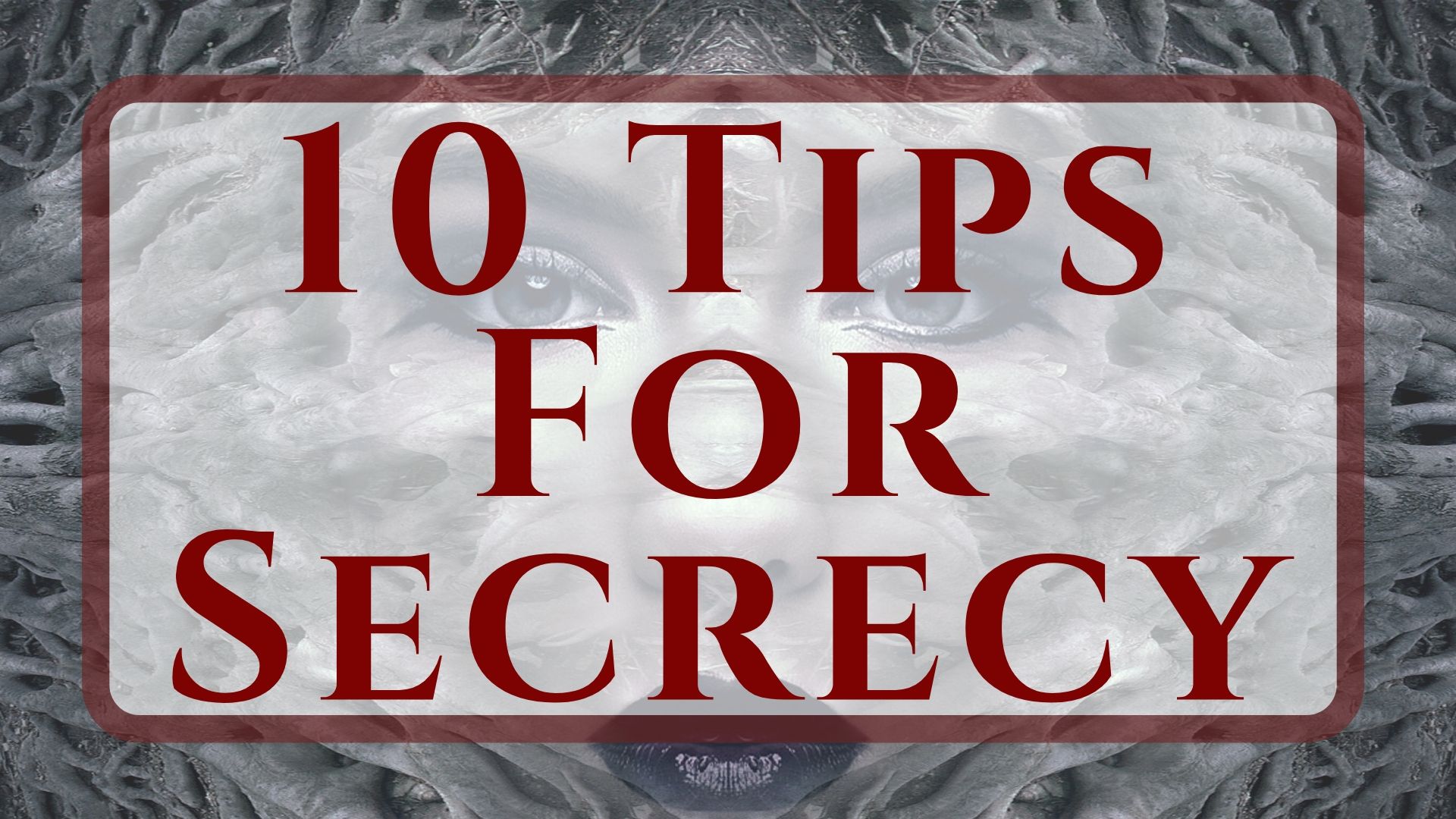A Theory of Creation – An Essay by a Witch
Speculation on how the Universe came to be has preoccupied theologians, scientists, and philosophers from the beginning of these disciplines. The very first theoretical discussion ever held between two human beings probably concerned creation and ended in disagreement.
When you make a purchase through links on our site, we may earn an affiliate commission. As an Amazon Associate I earn from qualifying purchases..
Cogitation, meditation, and calculation provide explanations ranging from existence of a divine plan to simple chance. All current theories rely to a lesser or greater degree upon circumstantial evidence or faith.
Scientists peer around each corner for the next, and hopefully, the last piece of the cosmic puzzle, while theologians seek their answers in the distant past. For the philosophers, time stands still while they reason the truth.
For the witch, the answer to this wonderment lies in its usefulness in understanding how the universe works. Any conclusions about the nature of creation must result in a better grasp of the laws governing its structure, thereby illuminating the cause of any given observable effect.
Since Wicca owes its sustenance to its practicality, its view of Creation employs a mixture of myth and empiricism that provides a model for universal structure and function that may not explain every detail of the mechanics of creation but does provide a model that enables us to find our place in the overall scheme.
Control implies understanding. Magic is impossible for those who do not comprehend the law of cause and effect, and magic that does not work has no value. The prime responsibility for any witch, ancient or modern, is to study what forces result in certain consequences and to distill these observations into a reliable method for controlling those forces to achieve a desirable outcome.
The limits of power, magical and mundane, are set according to our grasp of the structure and function of the universe. We may postulate the nature of mechanisms that exceed our immediate ability to observe them directly by understanding analogous processes open to our examination. A witch must learn constantly and be willing to abandon conclusions disproved by new evidence without prejudice.
Seek many opinions, draw swift conclusions, but weigh them carefully against the truth as dictated by the facts of the matter. That said, I will now strut out my own pet theory about creation, and how our origin may have been viewed by early man, leaving it to the reader to decide whether my words elucidate great truth or merely provide more fertilizer for the fallow fields of nocturnal debate!
My explanation of creation should stir you to ponder the question on your own and develop your own premise for how our universe works. A personal creation myth that improves your grasp of the law of cause and effect will increase your magical abilities considerably. Remember that the myth need only make sense to YOU.
Avoid fantasy and include as much practical knowledge as you can, but do not feel bound to uncover the Truth in all its illustrious detail. To prepare a meal, you do not need to know your way around every kitchen, just the one you’ll be working in. Only the ingredients and tools remain the same.
While most cultures have a creation myth of one kind or another, the Celts do not. The Celts view time as nonlinear, with the past, present, and future interwoven like the complex knotwork so common in their traditional art. From the Celtic perspective, creation is an ongoing process permeating all planes of existence.
The absence of Celtic dogma explaining how the universe arose allows each person to apply an individual perspective to this mystery without fear of flying in the face of dogma.
Since identification of cause and effect for any given phenomenon enhances control over that event, investigative science and magical practice encourage exploration of certain aspects of creation relating to how the various components of the universe interact and what laws govern those interactions.
As a practical matter, knowing the exact mechanism of creation would be unnecessary unless you had in mind duplicating the event on precisely the same scale. Feeling omnipotent lately? That the Celts recognized no particular plan for creation does not mean that they had no interest in the principles by which the universe functioned.
The Celts knew that most great mysteries could be solved in a way useful to human existence by studying the nature of their immediate environment and themselves, and extrapolating those principles to apply to everything in this world and the Otherworld.
The Celtic pantheon subscribes to this microcosmic world view. The Celts recognized that people were neither omnipotent nor omniscient. Therefore, their deities may be archetypal of human behavior, but they are not all powerful and often know little about matters not directly pertaining to them. In fact, it is said that the gods’ favor may be one through bringing them up to date on current events in the mundane world.
Wicca recognizes that creation involves a basic duality. The Goddess and the God personify these forces, ascribing the active principles to the male personality and the receptive, passive forces to the female. This convention likened the birth of the universe to the birth of a human child. Some aspects of human reproduction were observable, while some were not.
The ancients discovered quite early that knowing every detail of pregnancy meant little to the production of more humans. Thus, the universe need not lay bare all of its secrets for humans to live within its laws.
Early cultures held centrist beliefs about most things, believing that the key to understanding the elements of their world lay in self-knowledge. By learning about human nature, the structure and function of the entire universe and all of its parts could be discovered by inference. The Hermetic principle of “as above, so below” was in use long before Hermes documented it.
Do not make the error of assuming that prehistoric man lacked intelligence. In fact, the need to cope with environmental pressures without the grand technology of our modern age definitely would have selected against survival of the stupid. Staying alive long enough to reproduce required sharp powers of observation and constant learning. Nature forgives few mistakes, and the penalty for most infractions is death.
While Wicca had no practical use for knowing the exact means by which the Universe began, the nature of the forces involved came under intense study. The earliest witches subscribed to the modern scientists’ creed that thorough investigation and experimentation resulted in understanding, and that all that stood between a mystery and a known fact was the application of the scientific principles to each individual step of the process at hand until every cause and effect involved in the final outcome was known and categorized.
Unlike the scientist who may spend a lifetime quantifying a single step in a much larger process in an attempt to understand the whole, the witch focused efforts on grasping the whole first and the intricacies involved last. Bound to the need to describe findings in a common language recognized by all others researching similar puzzles, the scientist relies on logic and mathematics. The witch used these tools as well, but also employed intuition and guidance, considering these equally valid.
To the witch, practical knowledge meant grasping a subject with all the faculties, not just the intellect. The linearity of time hindered full understanding by limiting the investigative process to the present. The future could not be known, nor could the past with any great accuracy. Under such a system, all truth is partial and momentary.
By using intuition and travel to the planes beyond the mundane, the witch gathered information beyond the empirical and temporary, striking at the real, timeless Truth of the matter. This type of knowledge proved immediately useful to primitive cultures. The witch did not limit study to natural events. Human behavior came under intense scrutiny.
The very first leaders depended for their authority upon a deep understanding of human psychology. It is hardly coincidental that the bulk of knowledge passed on from primitive cultures to the modern age involves the inner workings of the human mind. Inspiring group activities like hunting expeditions or tribal migration to unknown territory required qualities of leadership that would make present day evangelists and football coaches pale by comparison.
To express such talent necessitated knowing the foundation of the psyche, not just a compilation of temporal facts and figures. Pollsters certainly had no place in Paleolithic society.
In summary, the scientist cannot possess complete knowledge of natural events without proof positive concerning the forces that produced the Universe, yet such incomplete knowledge finds expression in our technological world in the form of magnificent tools and toys. Such technology provides an immediate solution to survival by isolating us from Nature, a strategy whose flaws are the topic of headlines and doomsayers.
The cave man brought suddenly into the present is a popular theme of science fiction. These stories invariably dwell on the culture shock such a creature would experience viewing our many fine technological accomplishments, regarding us as virtual magicians, if not gods.
Consider that early man was not this idiot of fiction, but a reasoning human being who understood the importance of living in harmony with Nature, not in spite of it. There is a distinct possibility that he would see us not as gods, but as fools. Our technology has made us idiot savants, capable of incredible feats within narrow parameters, but unable to function beyond those bounds. Remove our crutch, and we fall.
Continuing the simile, we share the talents and failings of Dustin Hoffman’s character in “Rain Man”. We are brilliant and confident as long as our universe conforms to our particular linear concepts of time and space. Any other way of viewing its structure and function makes us nervous to the point of intellectual paralysis.
Ancient man recognized these limitations as a product of his ability to perceive and process sensory information. The development of magic and myth as a means of explaining and dealing with the true nature of the universe indicates strongly that man knew his place in the natural order and did not assume to hold dominion over the universe.
The oldest myths and legends support the idea that primitive societies considered themselves a part of Creation, not in charge of it. The gods, though entreated in every conceivable fashion, had minds of their own, and the universe was their domain to manipulate as they saw fit, not a divine gift to the human species that they might become its despots.
If man was to survive, he had to learn that Nature behaved according to a set of laws that did not pass away with time, but remained in effect through each epoch as though not a second had gone by since the dawn of the Universe.
While man saw time as lineal, the gods obviously did not. Much as in sports, the players changed, but the rules of the game remained the same, and the clock keeping time had relevance only to a single game in a single location.
Yet even these gods had limits. The Celts endowed their deities with human qualities, including the best and worst of human nature, magnified, naturally, by their deific status. The power of the gods came not from their perfection, but from their ability to think and act without regard to lineal time.
These gods did not create the Universe. They came into being with it. Their powers arose from the ability to function outside the parameters of time and space that limited man. They were not considered omnipotent, nor were they seen to be out of man’s reach or completely beyond human control. If you have ever been “owned” by a pet, you have an idea of why man thought it possible to direct deific force once a means of harnessing the power of these gods could be discerned. Prayer, spellcasting, and ritual became man’s endearing meow for a bit more cream in the saucer.
The traits of omnipotence and omniscience man withheld for the living body of Creation itself, an Almighty that exceeded his conceptual grasp as he did that of the earthworm, an entity so far removed from his observable existence that imprecation seemed ridiculous, much the way a newly hired mailroom clerk for a giant corporation would assess his chances for a closed door meeting with the chairman of the board during his first week at work.
Early man did not feel in the least slighted. After all, this Almighty had populated Creation with all manner of forces that man could learn to use to accomplish virtually anything he desired. All he need do was practice and pay attention to the world around him.
The key word in working magick within the realm of Creation is “force”. What, in prehistoric culture, may appear to be polytheism to the learned and pagan idolatry to the pious was in fact merely a convenience of classification. Surviving pagan lore indicates that the various deities represented separate aspects of a single being existing on a higher plane than humans.
A podiatrist and a brain surgeon are both doctors. Which one is most likely to remove a wart from your toe (and charge the least for it)? Early cultures depended for survival on their ability to learn as much practical information as possible about their environment.
While we may hold leisurely discussions couched in theoretical terms and seasoned with hypotheses that have no consequence toward our continued existence, such luxury had no place in the lives of our ancestors.
Technology allows us to skim through life oblivious to most of the forces of nature. The breadth of our knowledge has certainly increased, especially with the advent of the industrial age, but much of that knowledge would prove useless were we to be transported back in time more than a few hundred years.
For the great bulk of human existence, industry and technology as we know them provided no sanctuary against the trials of nature.
The first humans had to gather information rapidly and regularly to keep pace with Mother Nature. Group discussions were long on facts and short on speculation. Remaining alive required cogent, concise analysis of data and accurate implementation of resulting plans.
As would any good scientific community, the first peoples sought to categorize everything around them into two basic groups; that which could not be controlled and those things that could be made to respond to some manmade force or action.
Man recognized that having at least some control over his surroundings enhanced chances for survival and made every effort to find the means for moving as many items as possible from the first classification to the second, adopting those methods that proved efficacious and swiftly discarding those that did not.
Every feature of the environment fell into one of these two groups, including the stars, the moon, and the earth itself. Constant study indicated that those forces that could not be controlled produced far less negative influence on overall survival if their behavior could be predicted.
Thus, the first wise ones became fluent in the language of nature. Like a skilled detective, the witch sought clues everywhere that would aid the prediction of natural events that could impact human efforts to survive. By studying the movement and position of heavenly bodies, it was possible to predict the seasons. Watching animals scurrying to gather food provided an indication of the coming Winter’s severity.
All these observations led to one conclusion; that while man may perceive time as lineal, the forces and laws of Nature were definitely cyclic. The seasons and stars followed a circular path, always returning to their starting points. Early man inferred from this that life itself must follow the same map; that death was not an absolute end of existence but merely a point on the circle of life. New life would follow death as surely as Spring does Winter.
Through observation and intuitive extrapolation, the first witches learned the basic truth of universal structure and applied it to humanity. How the Universe began became an intellectual puzzle for idle minds. How the whole thing worked proved far more important.
The Druids’ reverence for trees makes perfect sense, since trees were easily the oldest observable living things, virtually immortal barring destruction by calamity or disease.
The oak and ash stood as living proof that life did not end, and that apparent death was illusory. While modern Wicca may include many divergent schools, the celebration of the Wheel of the Year pervades every tradition. All ancient teaching within Wicca took the form of symbols, and the circle is among the earliest.
From the Wiccan viewpoint, knowing the exact moment and mechanism of creation is insignificant compared to understanding the timeless laws and principles that govern the Universe. Explanations that seek to assign creation to a specific time, place, and series of events err by assuming that all structure and function within the Universe obeys our sense of linearity.
To fully grasp the Universe and work magic within it, one must know the limitations of human sensory perception and not be deceived into believing that this perception represents the true nature of the Universe.
You may agree or disagree with this explanation of the origin of things, but retain the axiom that the Universe exists according to its own nature and not to any notion that you may ascribe to it.















